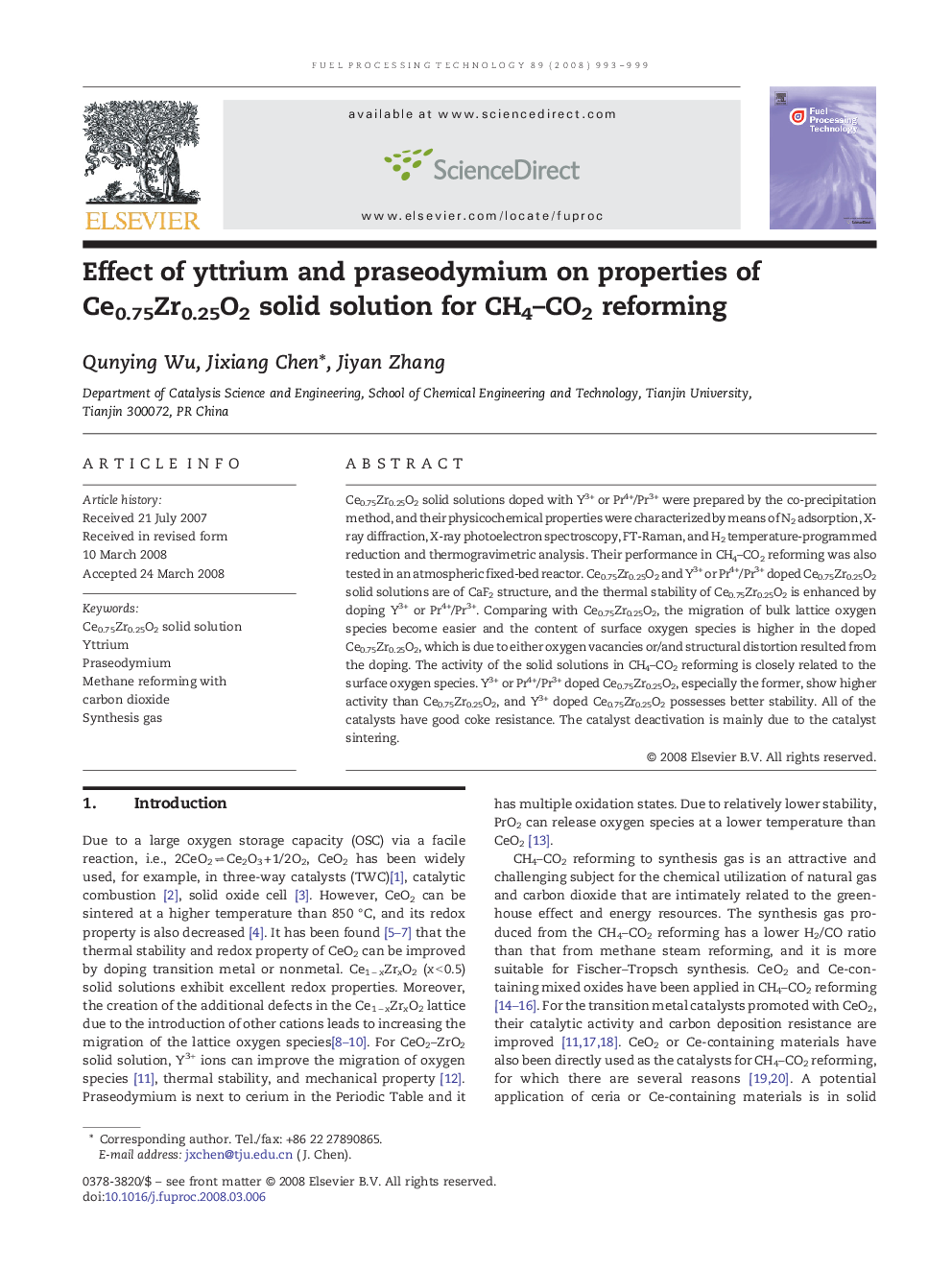| Article ID | Journal | Published Year | Pages | File Type |
|---|---|---|---|---|
| 211421 | Fuel Processing Technology | 2008 | 7 Pages |
Ce0.75Zr0.25O2 solid solutions doped with Y3+ or Pr4+/Pr3+ were prepared by the co-precipitation method, and their physicochemical properties were characterized by means of N2 adsorption, X-ray diffraction, X-ray photoelectron spectroscopy, FT-Raman, and H2 temperature-programmed reduction and thermogravimetric analysis. Their performance in CH4–CO2 reforming was also tested in an atmospheric fixed-bed reactor. Ce0.75Zr0.25O2 and Y3+ or Pr4+/Pr3+ doped Ce0.75Zr0.25O2 solid solutions are of CaF2 structure, and the thermal stability of Ce0.75Zr0.25O2 is enhanced by doping Y3+ or Pr4+/Pr3+. Comparing with Ce0.75Zr0.25O2, the migration of bulk lattice oxygen species become easier and the content of surface oxygen species is higher in the doped Ce0.75Zr0.25O2, which is due to either oxygen vacancies or/and structural distortion resulted from the doping. The activity of the solid solutions in CH4–CO2 reforming is closely related to the surface oxygen species. Y3+ or Pr4+/Pr3+ doped Ce0.75Zr0.25O2, especially the former, show higher activity than Ce0.75Zr0.25O2, and Y3+ doped Ce0.75Zr0.25O2 possesses better stability. All of the catalysts have good coke resistance. The catalyst deactivation is mainly due to the catalyst sintering.
